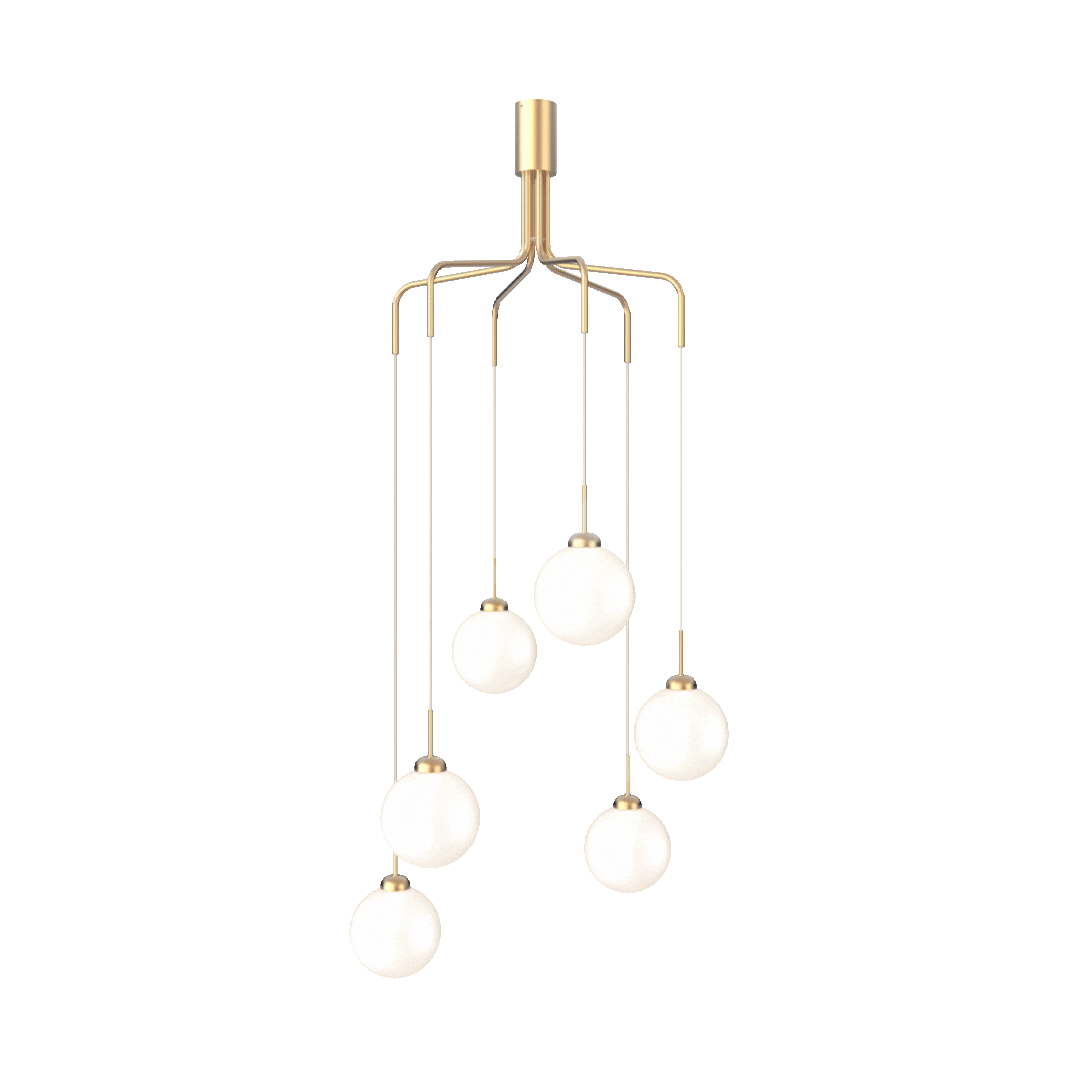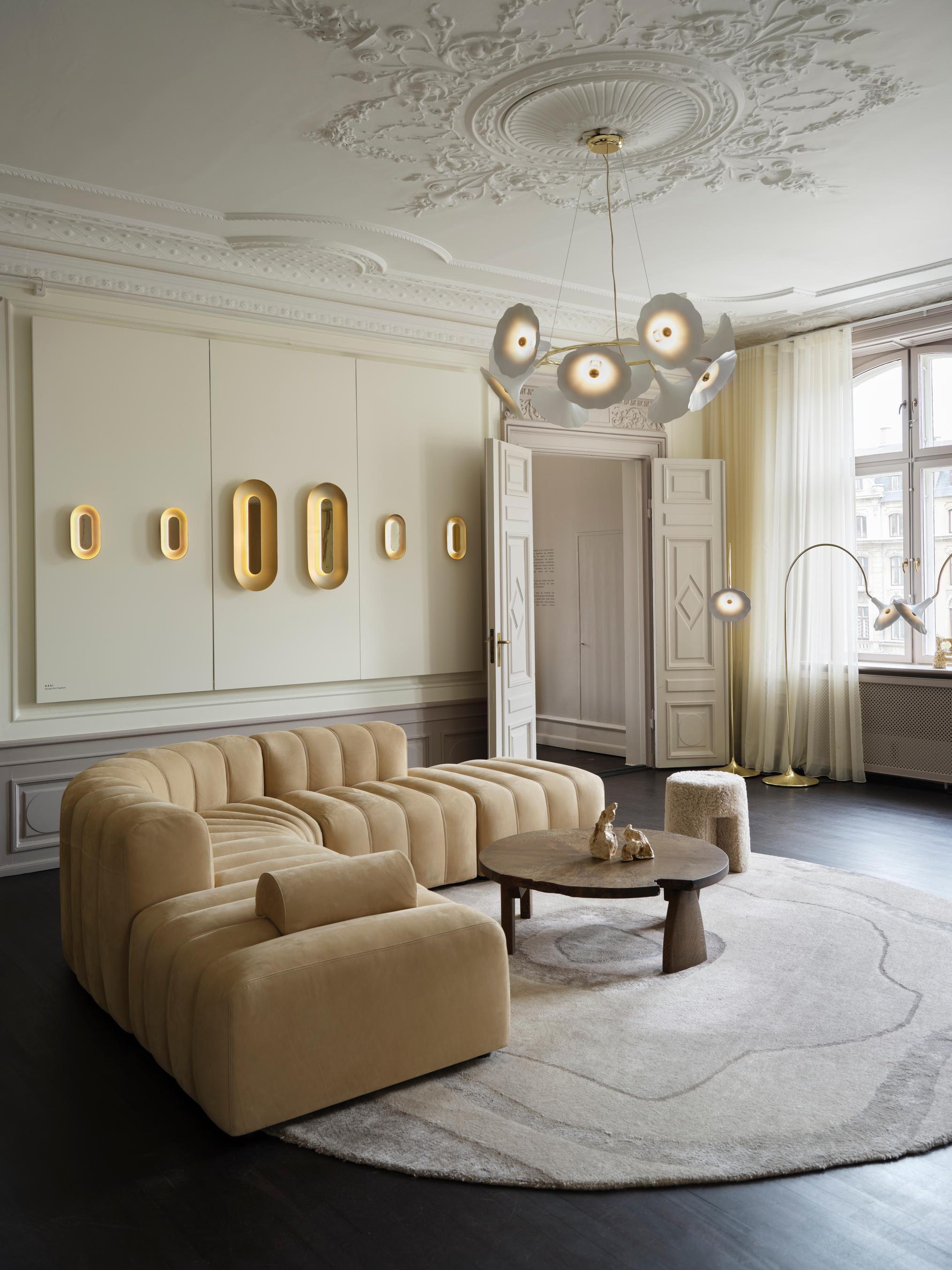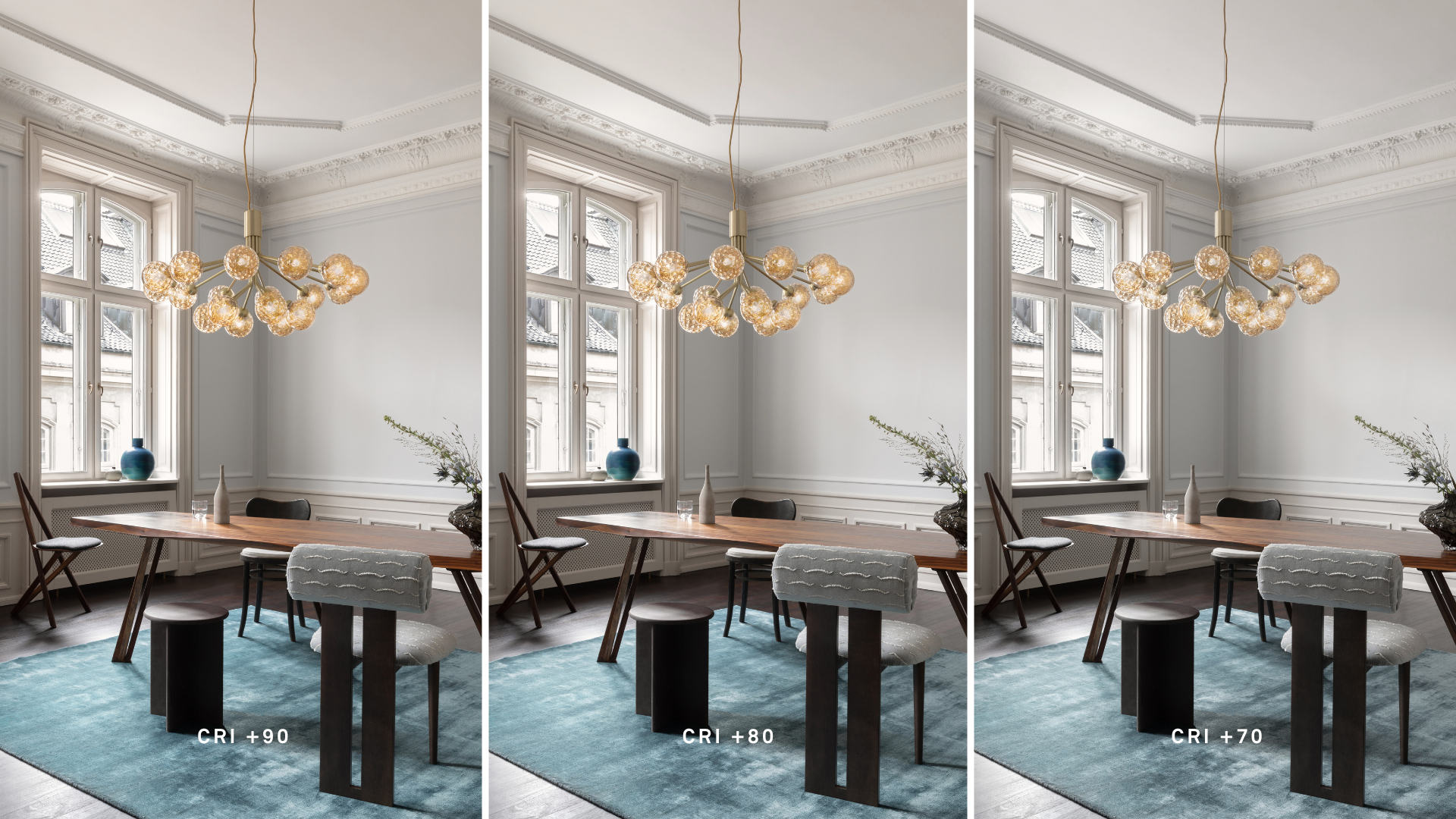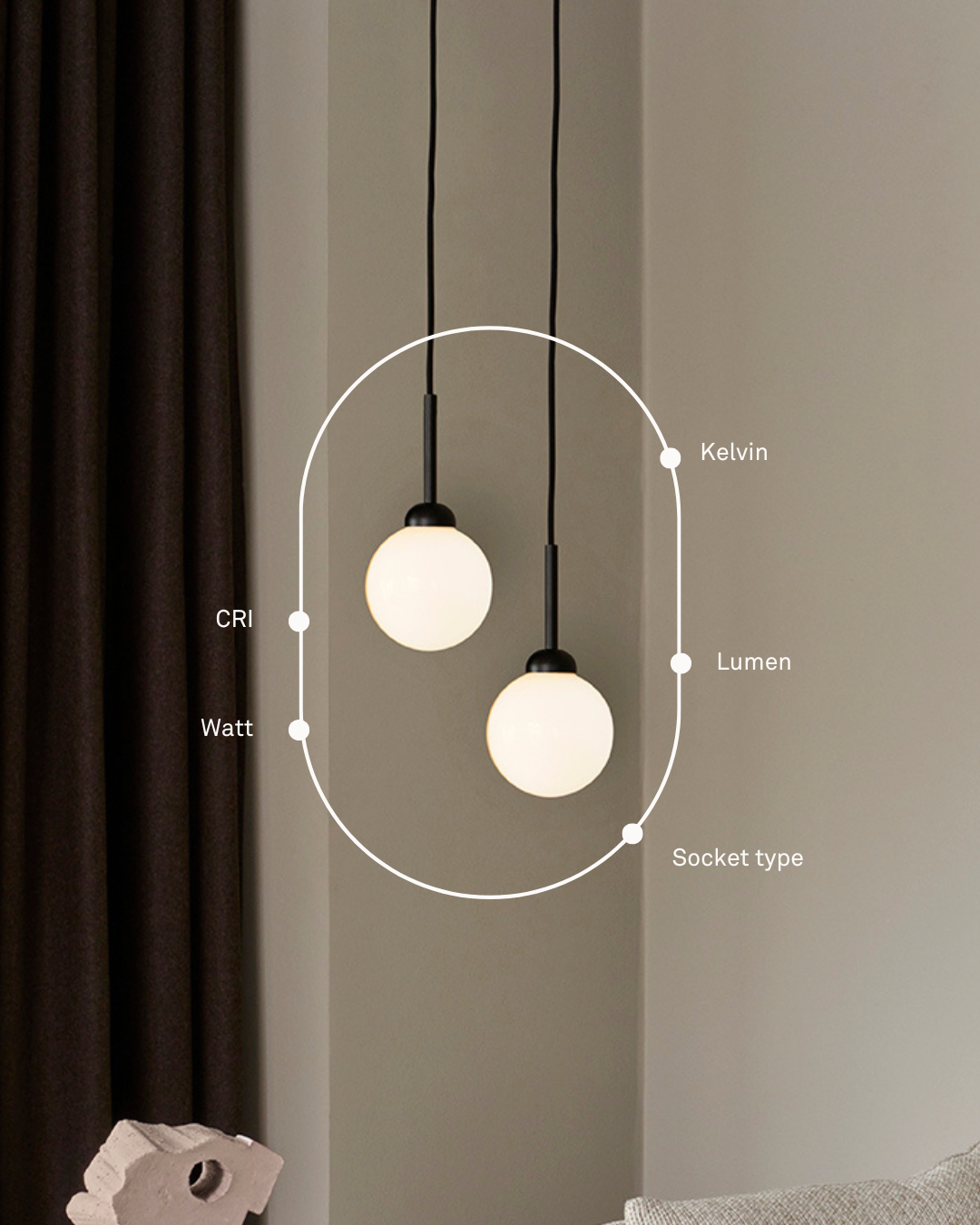
Getting the bulb right
When choosing the right light bulb, it’s essential to understand key terms like Kelvin, Lumen, Watt, and CRI. These specifications not only help you pick the perfect brightness but also enhance the ambiance and energy efficiency of your space.
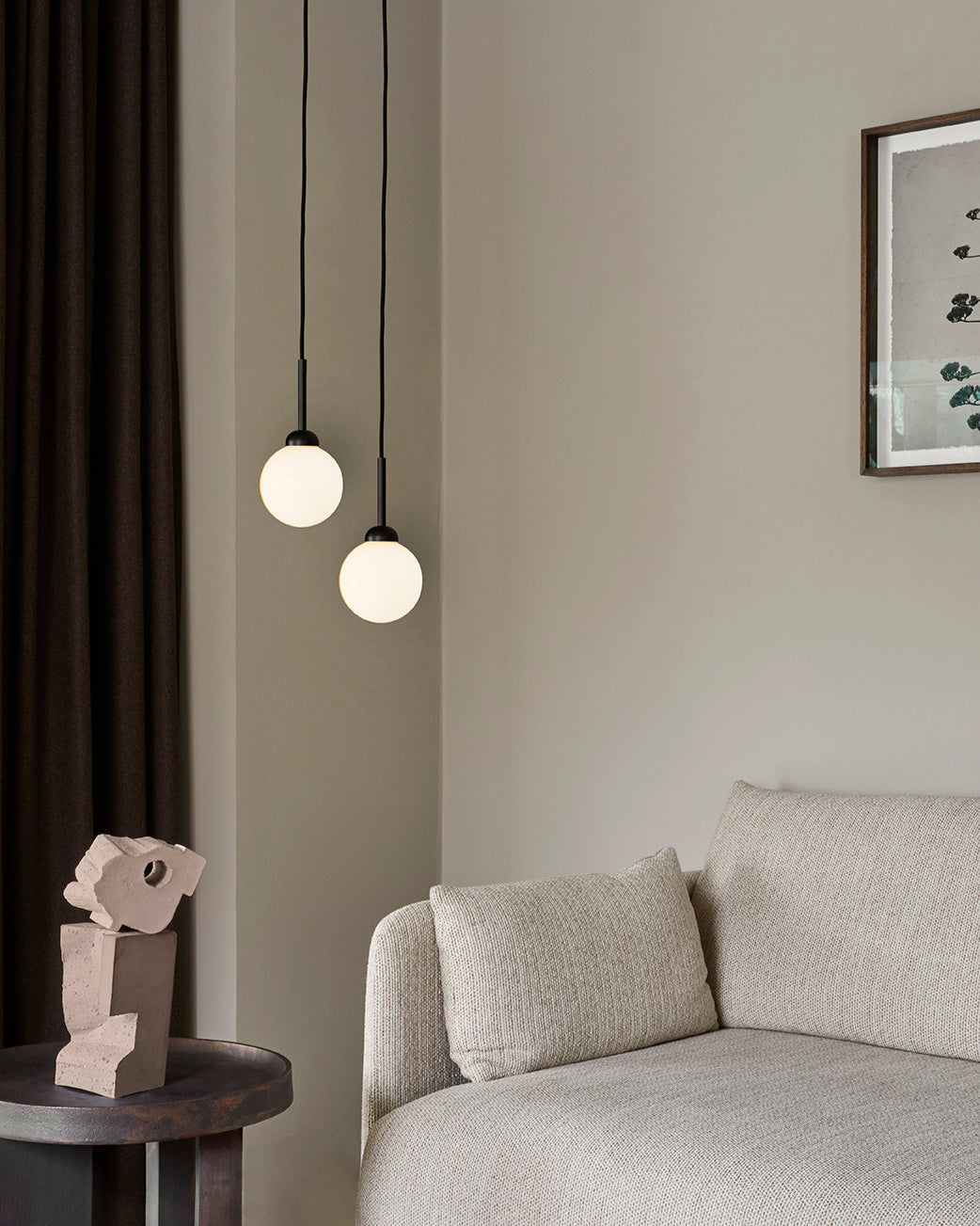
Mood, productivity, & well-being
Lighting is a crucial part of our daily lives, influencing our mood, productivity, and well-being. Each type of light contributes in its own way to creating the ideal atmosphere — whether it’s calm, energised, or focused.
Shining a light on the basics
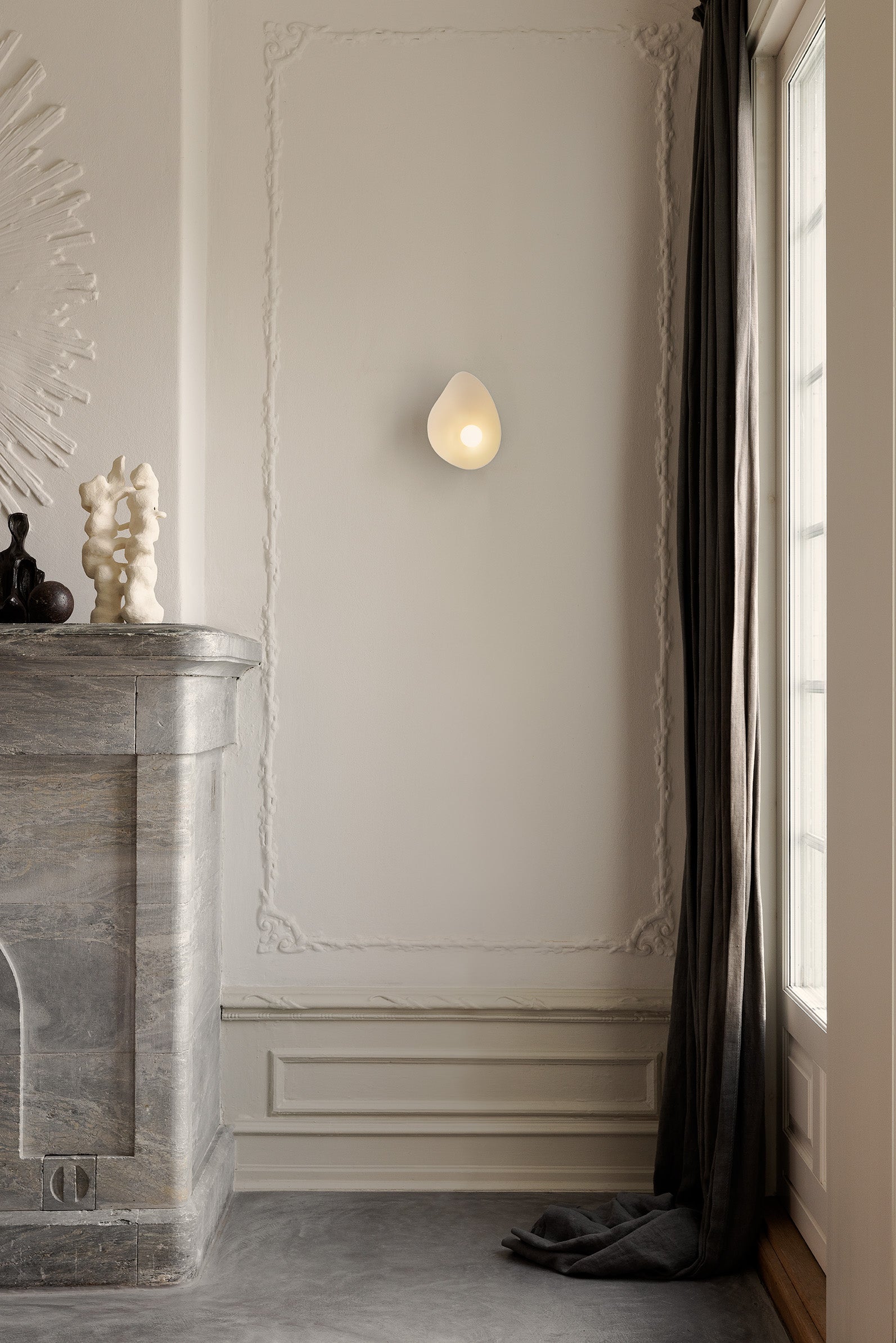
THE BASICS
Kelvin (K)
Kelvin measures the color temperature of light, which ranges from warm, yellowish tones to cool, bluish light. It's crucial because different temperatures affect the mood and functionality of a space. The typical kelvin scale ranges from 1,000K (very warm) to 10,000K (very cool), with most household lighting falling between 2,000K and 6,500K.

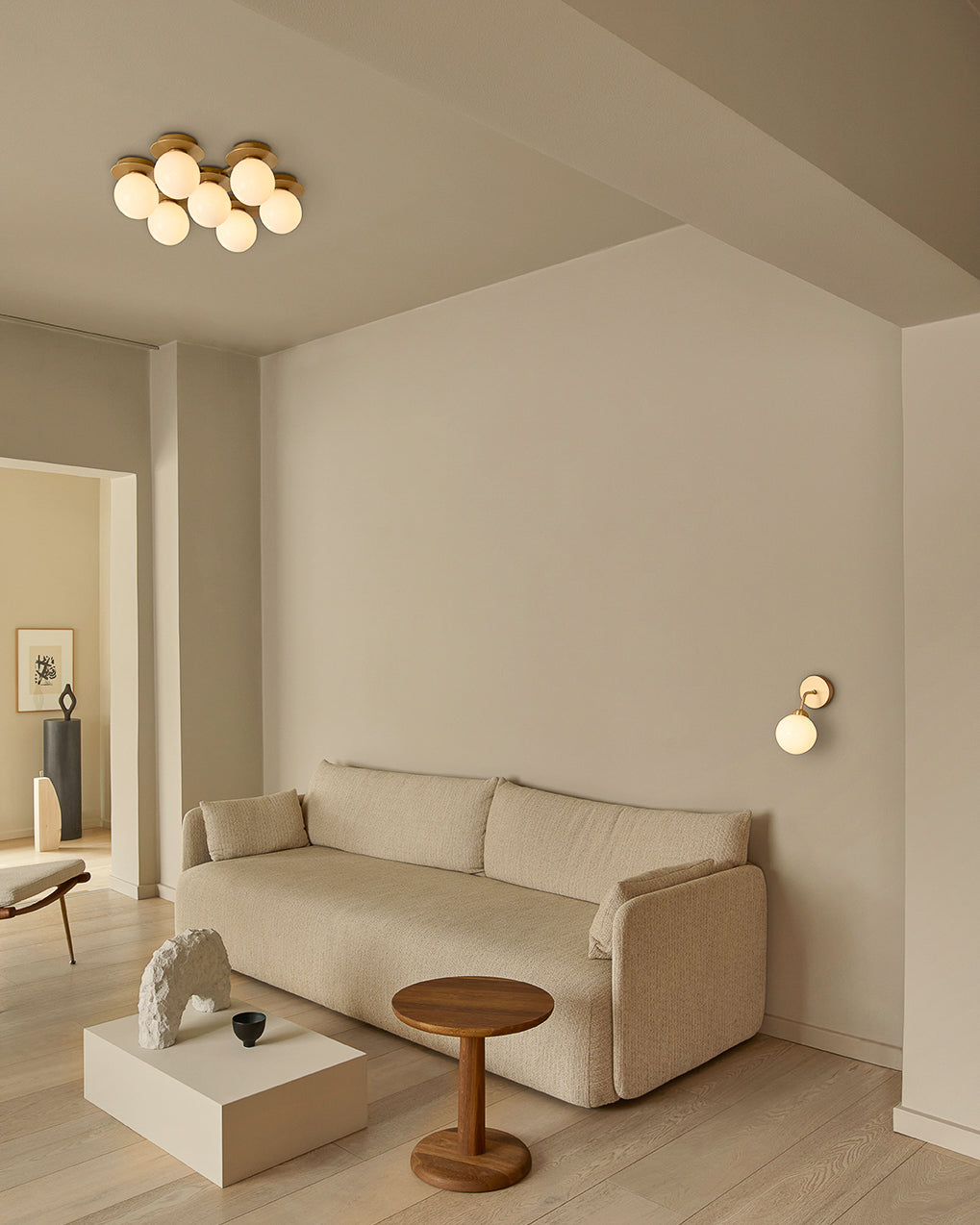
Warm light
2700K–3500K produces a cozy, inviting glow that’s often used in bedrooms and living rooms. It mimics the natural light at sunrise or sunset, making it ideal for relaxation.
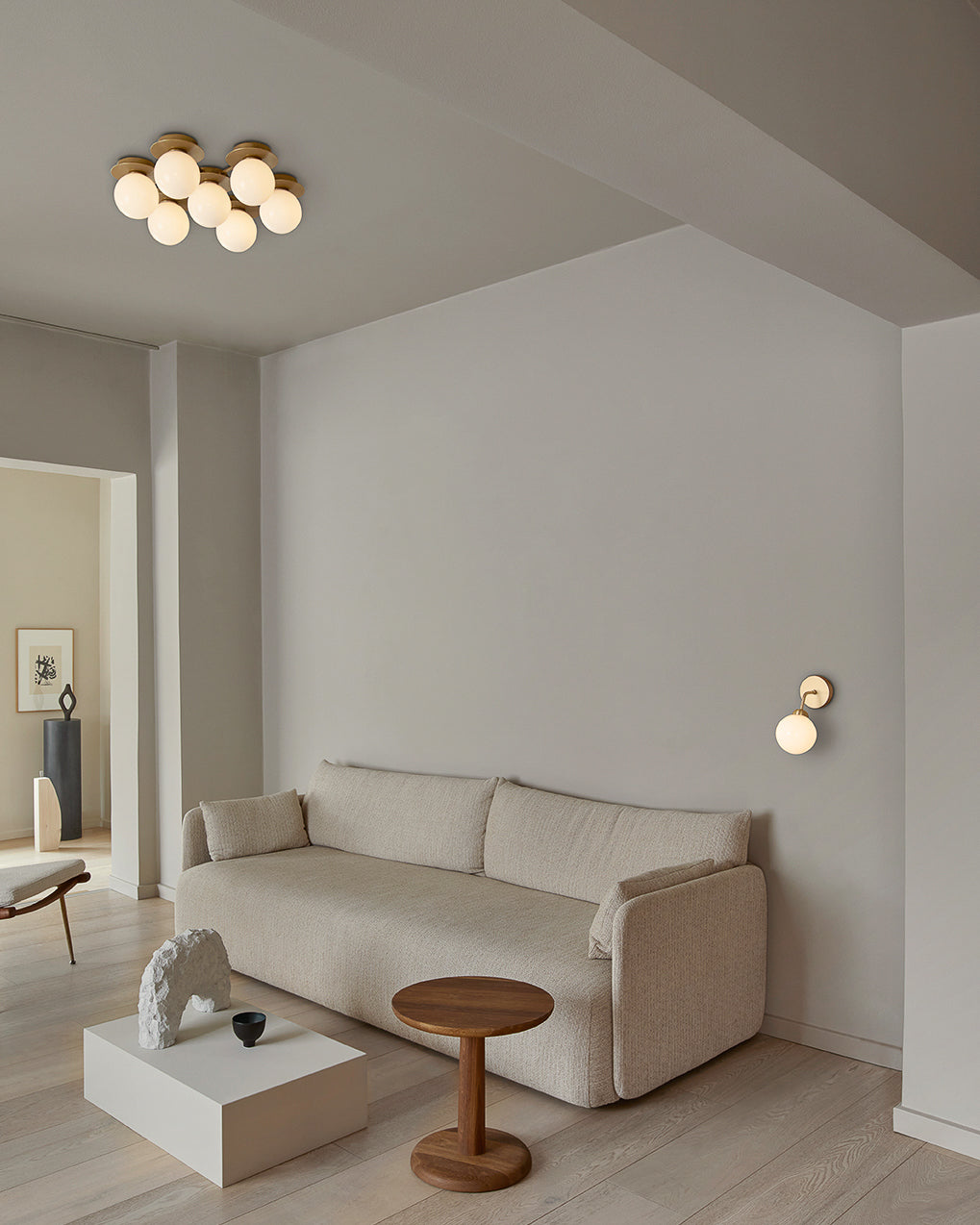
Neutral light
3500K–4500K provides a balanced white light, often used in kitchens, bathrooms, and workspaces. It offers more clarity than warm light without being harsh.
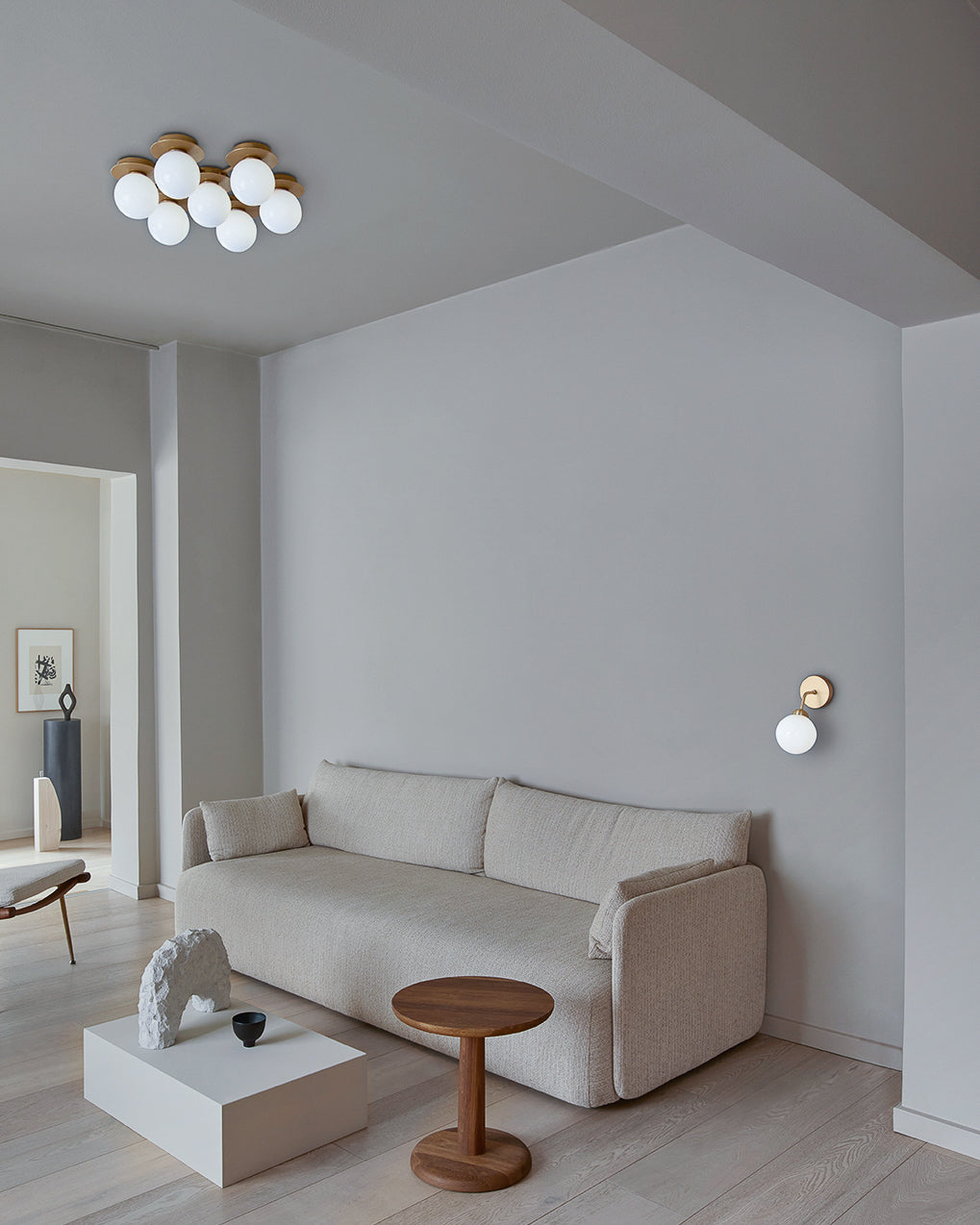
Cool light
4500K–6500K mimics daylight, and is great for task-oriented spaces like offices. It’s also commonly used in settings where attention to detail is needed.
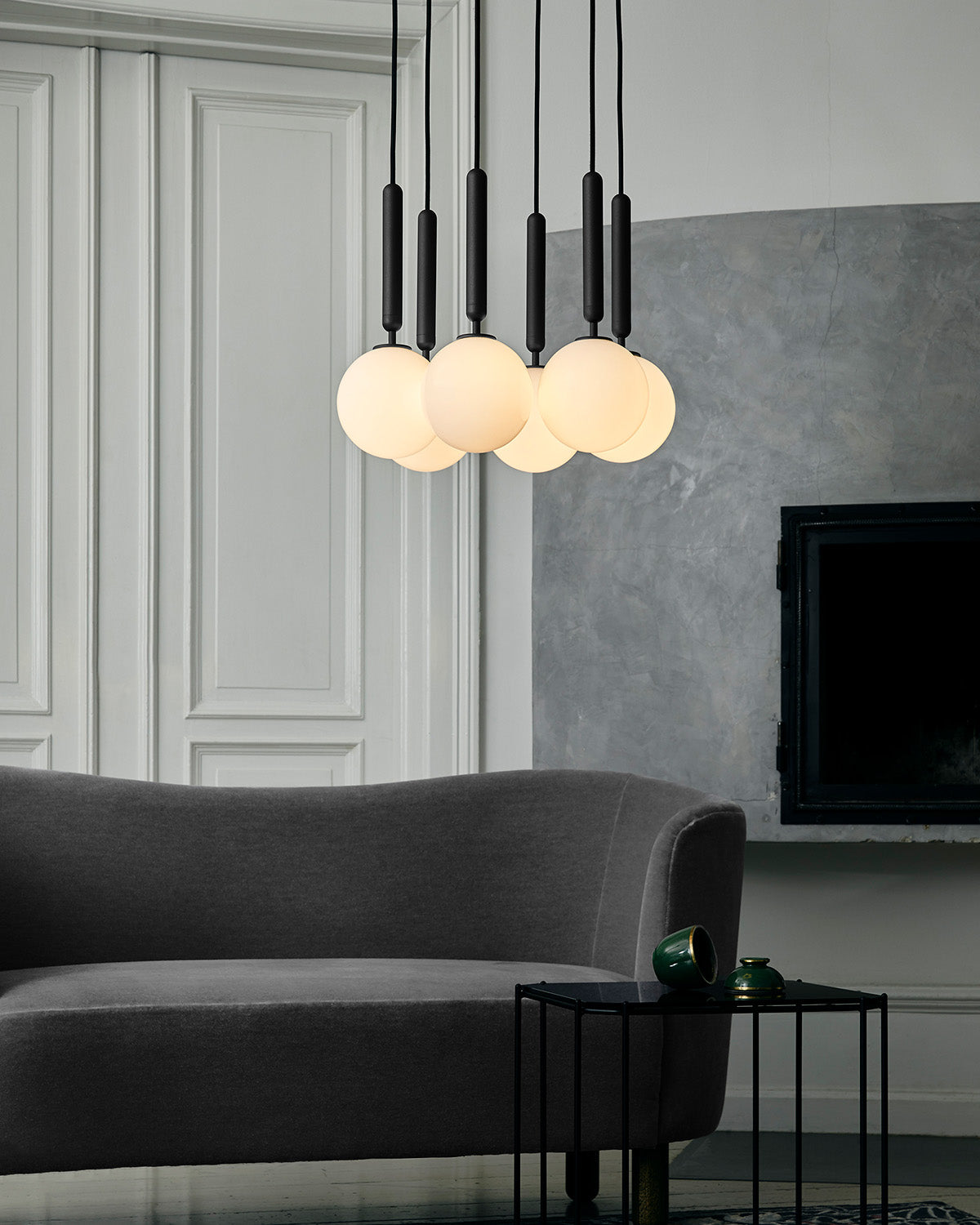
THE BASICS
Lumen (lm)
Lumen measures the total light output or brightness of a bulb. Unlike watt, which tells you how much energy a bulb consumes, lumen indicates how much light a bulb emits. A higher lumen count means a brighter bulb.

Mood-creating lighting
To highlight specific features or create a mood, 200–500 lumens can suffice.
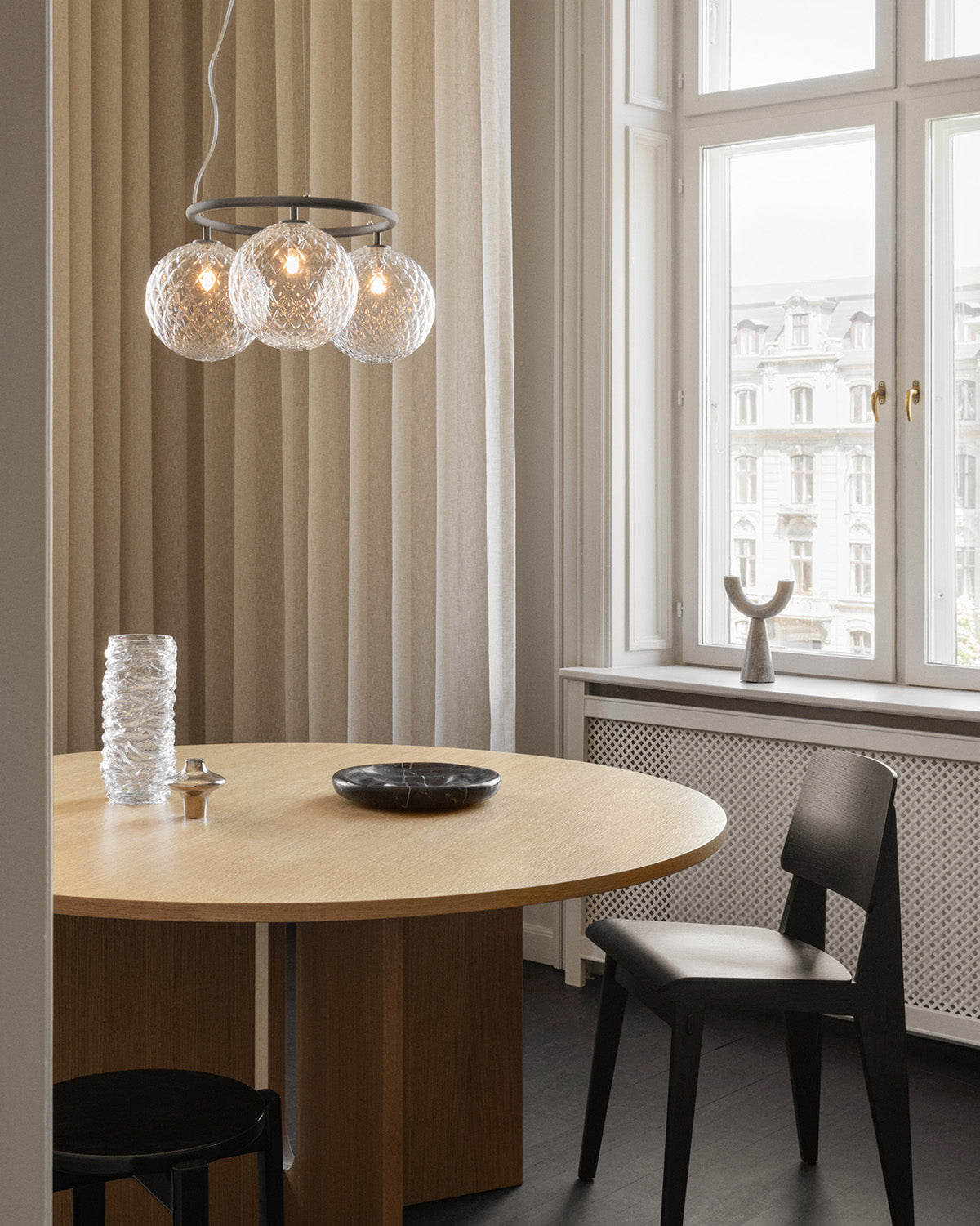
Primary lighting
For general lighting in living rooms or bedrooms, 500–1,000 lumens is usually enough to provide a soft glow.
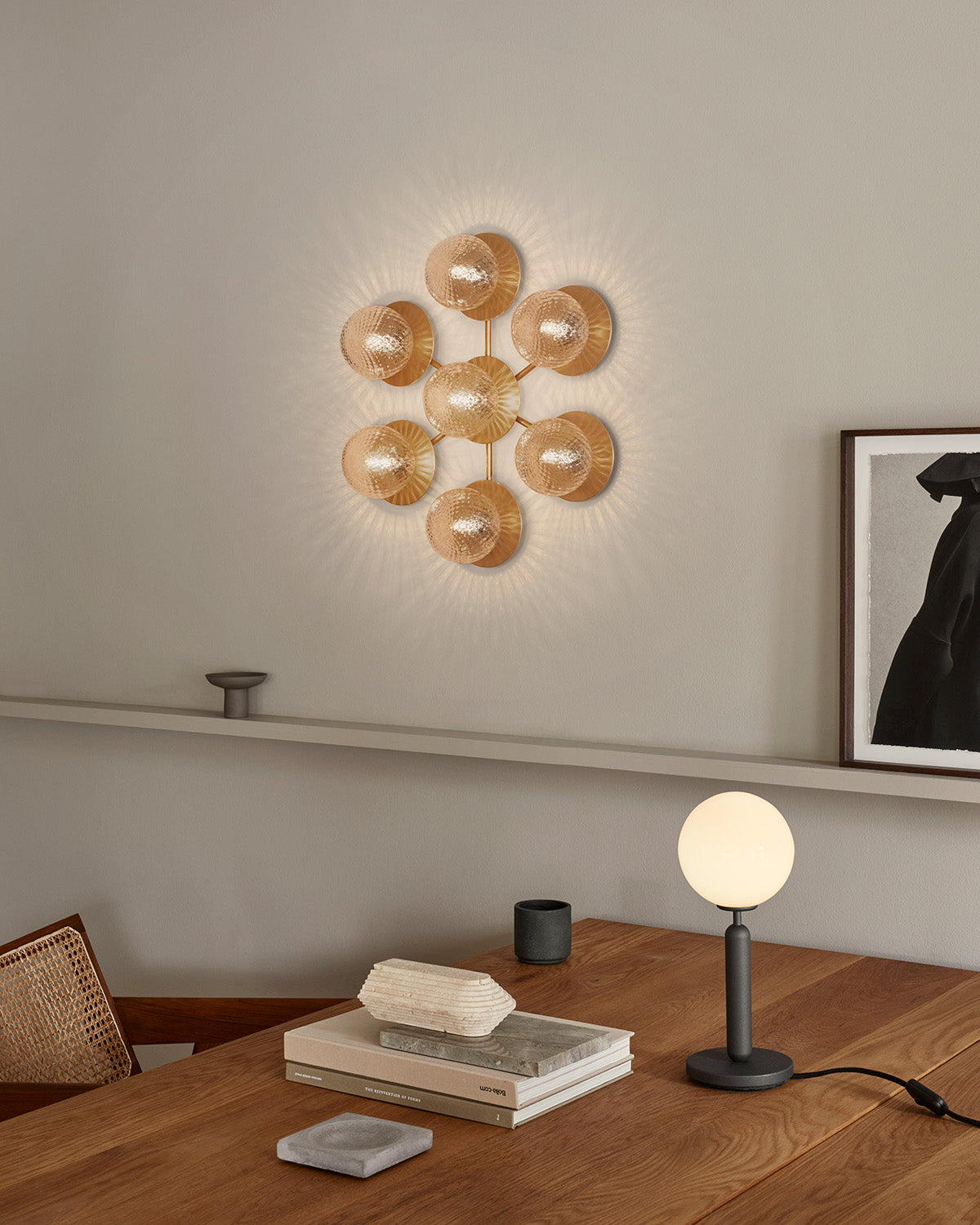
Task lighting
In workspaces you may need 1,000–2,000 lumens to ensure adequate brightness for detailed tasks.
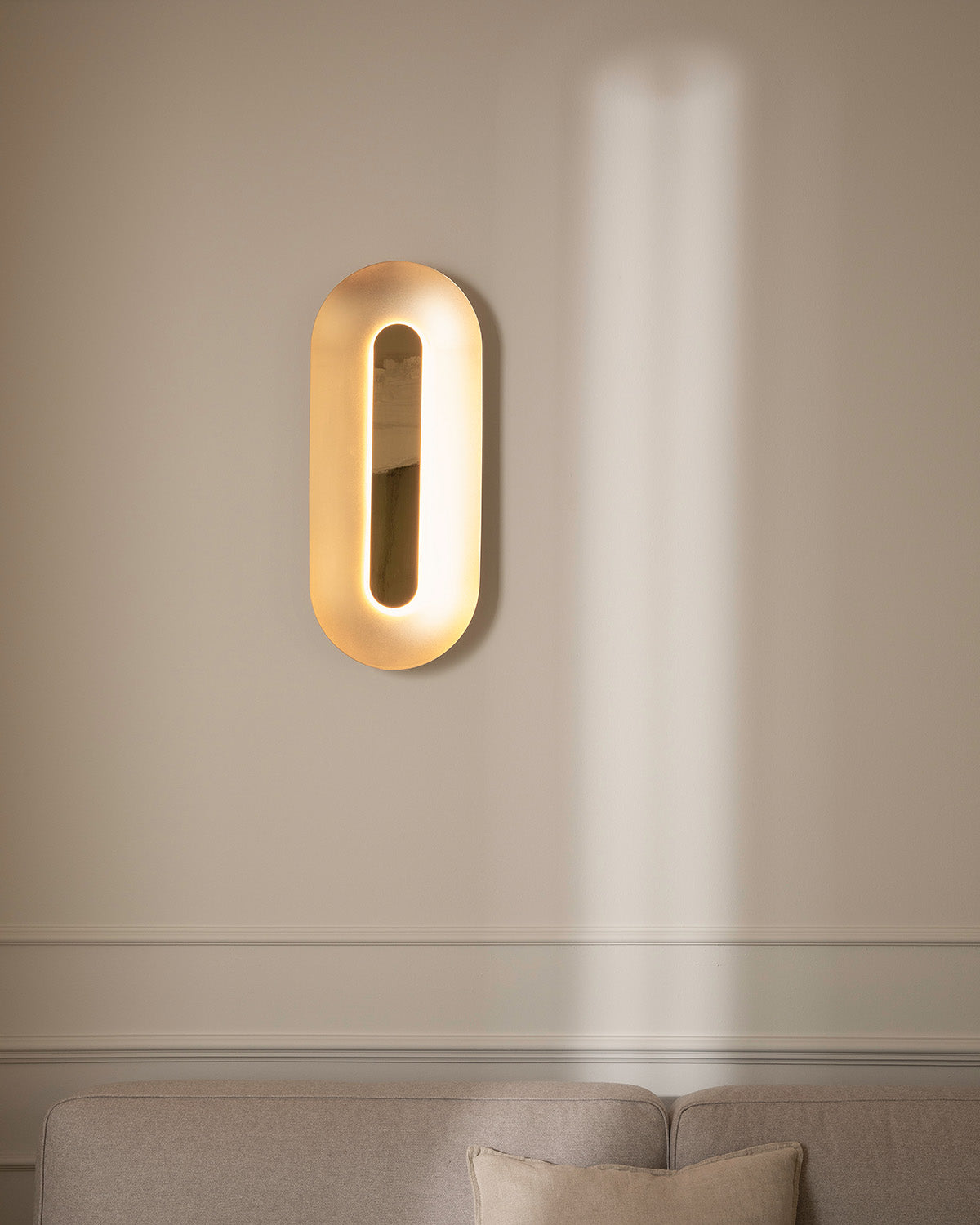
THE BASICS
Watt (W)
Traditionally, watt was associated with brightness, but with modern LED technology, watt now primarily refers to energy consumption. LEDs consume far less energy while still providing the same brightness as older incandescent or halogen bulbs. For example, a 10W LED can be as bright as a 60W incandescent bulb.
Here’s a quick comparison:
- Incandescent: A 60W bulb produces around 800 lumens.
- LED: An 8W–12W LED can produce the same 800 lumens, making it much more energy-efficient.
By opting for lower-wattage LEDs, you reduce electricity consumption while still achieving the desired level of brightness.
THE BASICS
CRI (Colour rendering index)
CRI measures how accurately a light source reveals the true colors of objects. The CRI scale goes from 0 to 100, with natural sunlight having a CRI of 100. A higher CRI means colors will appear more vivid and true to life, which is important in areas where color precision is necessary, such as in kitchens, art studios, or bathrooms.
- CRI 80+: Suitable for most general lighting purposes, offering good color rendering for everyday tasks.
- CRI 90+: Best for spaces where color accuracy matters, like in makeup areas, photography studios, or retail environments. High CRI lights make colors pop and appear more natural.
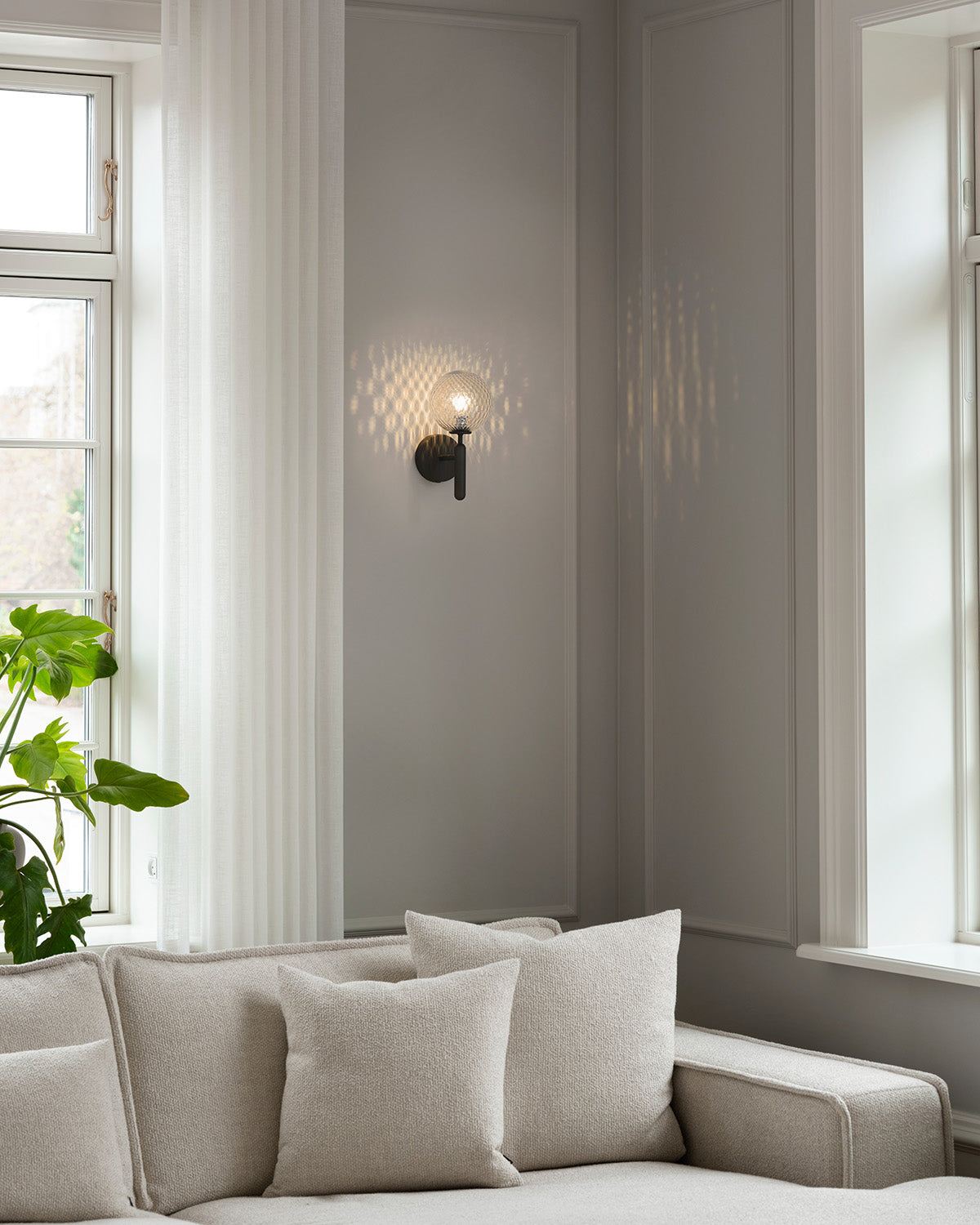
LIGHT SOURCE GUIDE
Download our light source guide
At Nuura we work with several different light sources where some are designed to preform effortlessly in professional settings. We have curated a light source guide for our products that you can view and download here.
With the right light comes well-being
The power of light
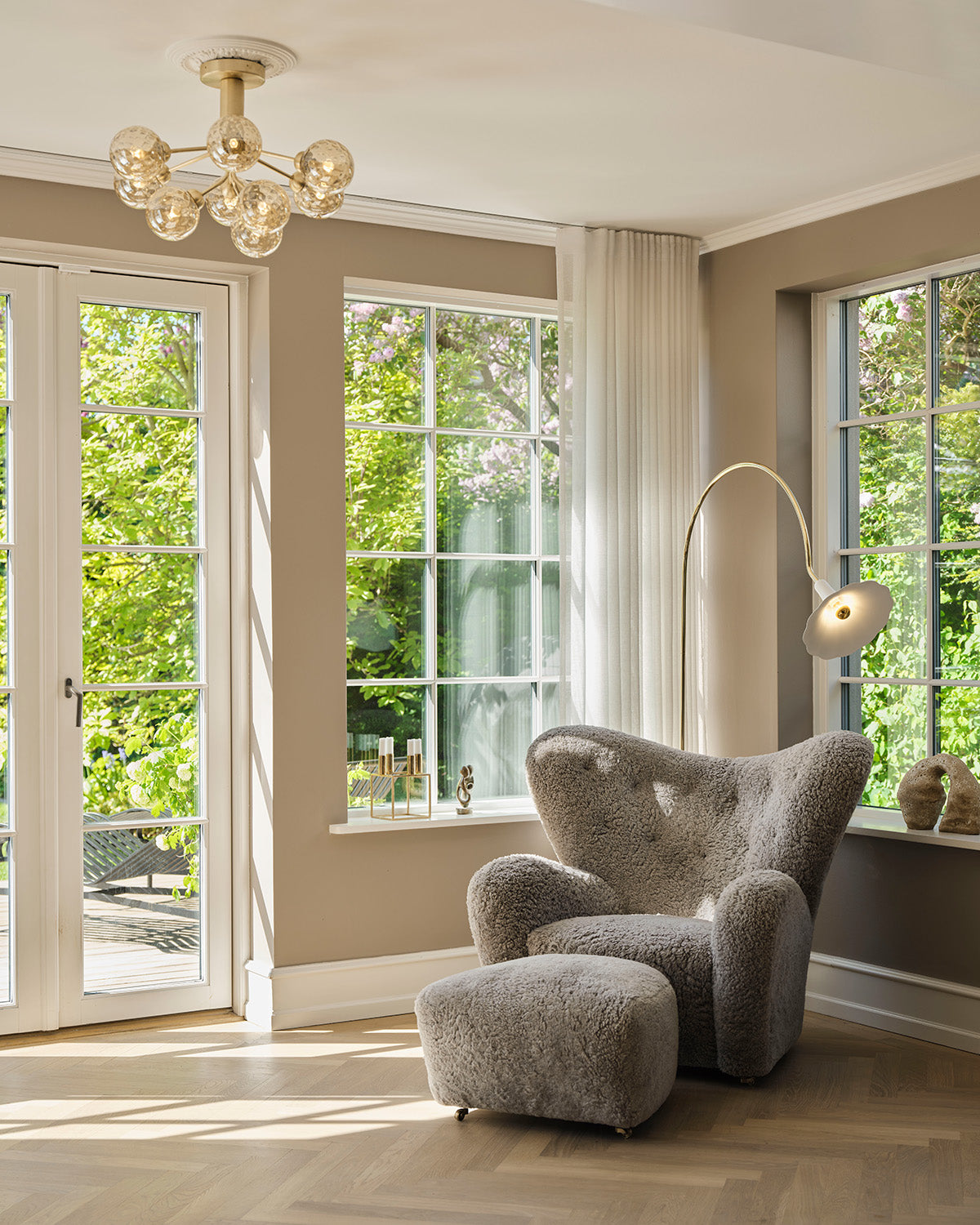
Light, mood & well-being
Combine the benefits of natural sunlight with well-managed artificial light and create an environment that supports better well-being.
Read more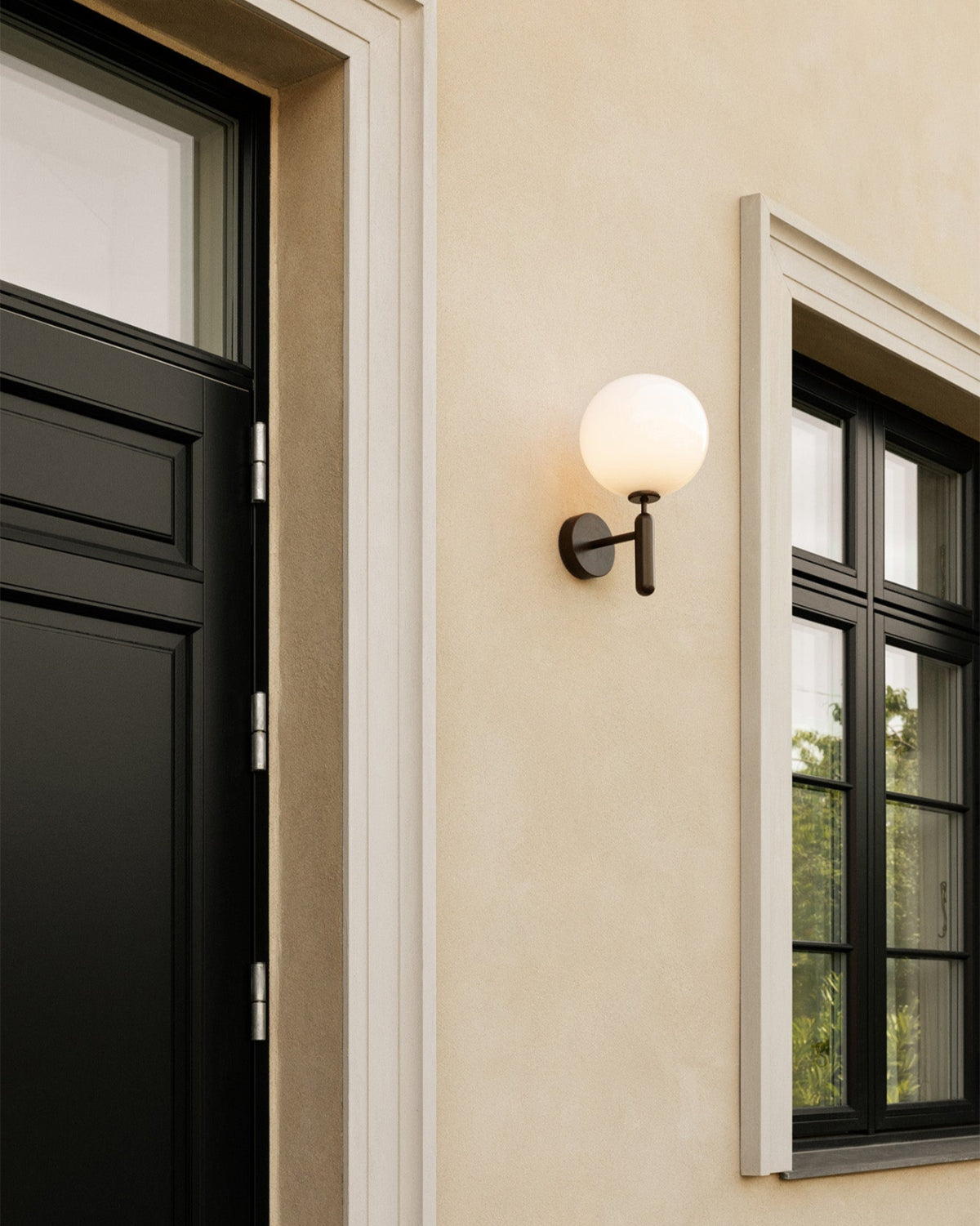
Wet-zone guide
When selecting lighting, it is essential to consider the IP classification. Explore the different ratings in our wet-zone guide.
Read more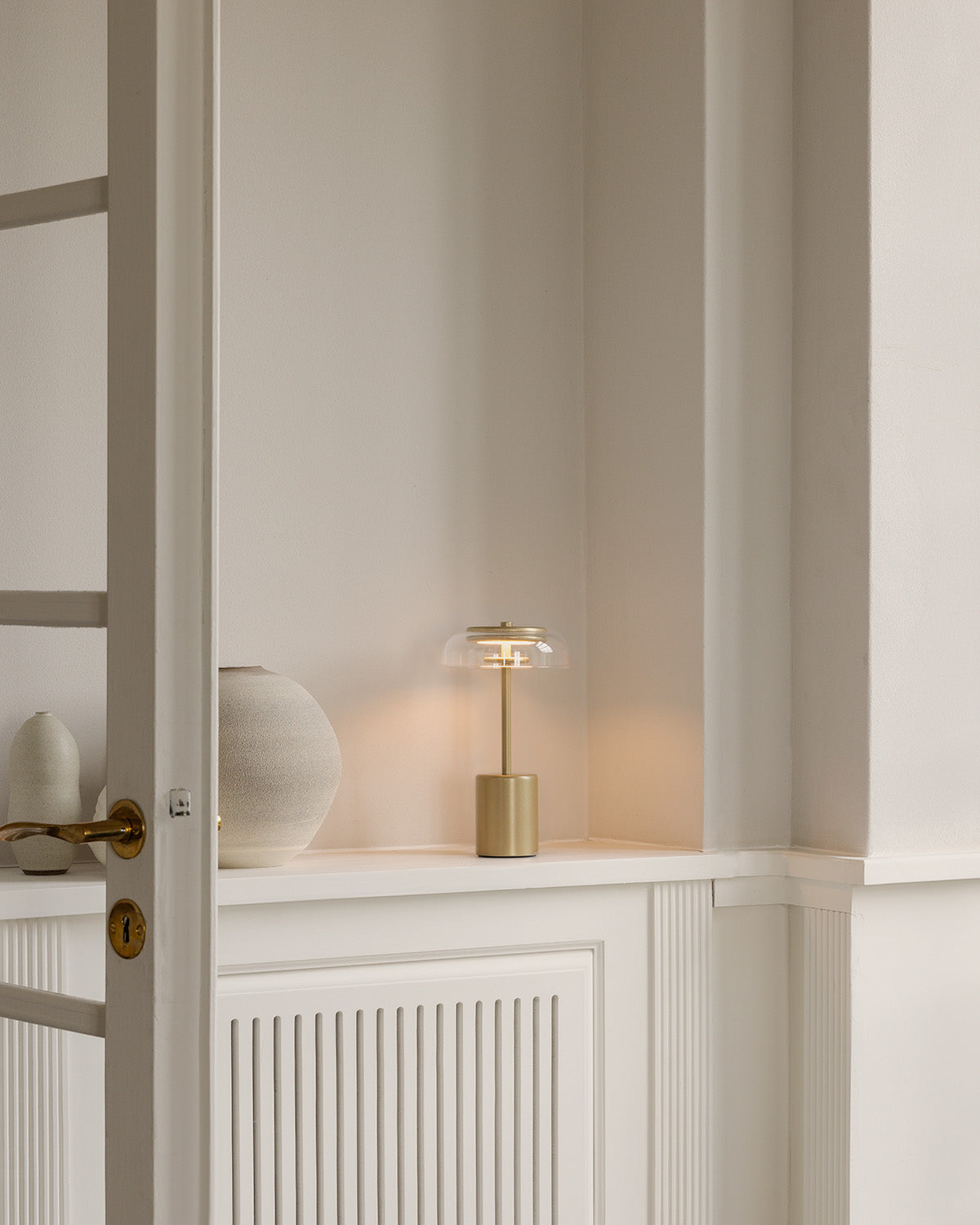
Light & circadian rhythms
Adjust your indoor lighting to follow the sun's natural cycle to support better mood,
mental health, and overall well-being.



